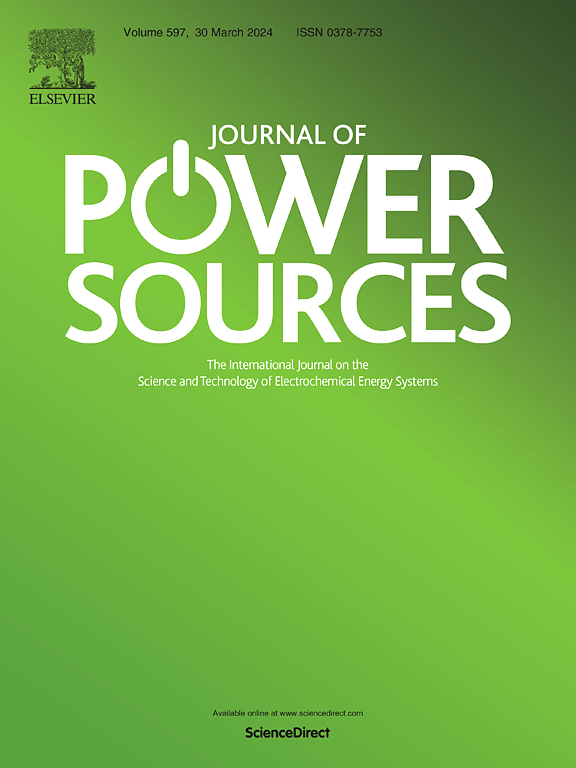电解质添加剂的设计使一种无枝晶可充电水性锌离子电池性能稳定
IF 8.1
2区 工程技术
Q1 CHEMISTRY, PHYSICAL
引用次数: 0
摘要
水锌离子电池(AZIBs)以其优异的安全性、低成本和高理论容量在该领域取得了重大进展。然而,枝晶形成和析氢反应等问题限制了azib的实际应用。在这方面,azib通过将传统电解质与环保、无毒、低成本的电解质添加剂相结合来解决上述问题。本研究选择硫酸钠和柠檬酸钠作为电解液添加剂对azib进行优化。结果表明,钠离子可以改变Zn2+的沉积形态,防止枝晶的形成,从而稳定Zn阳极。因此,对称电池可以在5 mA cm - 2电流密度下稳定循环1400 h,在20 mA cm - 2电流密度下稳定循环400 h。这项工作提出了一种简单而经济的方法来实现高性能azib。本文章由计算机程序翻译,如有差异,请以英文原文为准。

A rechargeable aqueous dendrite-free zinc ion battery with robust performance enabled by the design of electrolyte additive
Aqueous zinc ion batteries (AZIBs) have attained significant progress in the field owing to their outstanding safety, low cost, and high theoretical capacity. However, several issues, such as dendrite formation and hydrogen evolution reactions, limit the practical application of AZIBs. In this regard, the aforementioned problem of AZIBs is addressed by combining traditional electrolytes with environmentally friendly, non-toxic, and low-cost electrolyte additives. In this work, sodium sulfate and sodium citrate were selected as electrolyte additives for the optimization of AZIBs. It was demonstrated that sodium ions can alter the deposition morphology of Zn2+ to prevent dendrite formation, thereby stabilizing the Zn anode. Consequently, the symmetrical cell can cycle stably for 1400 h at a current density of 5 mA cm−2 and 400 h at 20 mA cm−2, respectively. This work presents a simple and cost-effective approach to achieve high-performance AZIBs.
求助全文
通过发布文献求助,成功后即可免费获取论文全文。
去求助
来源期刊

Journal of Power Sources
工程技术-电化学
CiteScore
16.40
自引率
6.50%
发文量
1249
审稿时长
36 days
期刊介绍:
The Journal of Power Sources is a publication catering to researchers and technologists interested in various aspects of the science, technology, and applications of electrochemical power sources. It covers original research and reviews on primary and secondary batteries, fuel cells, supercapacitors, and photo-electrochemical cells.
Topics considered include the research, development and applications of nanomaterials and novel componentry for these devices. Examples of applications of these electrochemical power sources include:
• Portable electronics
• Electric and Hybrid Electric Vehicles
• Uninterruptible Power Supply (UPS) systems
• Storage of renewable energy
• Satellites and deep space probes
• Boats and ships, drones and aircrafts
• Wearable energy storage systems
 求助内容:
求助内容: 应助结果提醒方式:
应助结果提醒方式:


